Dutch windmills are one of the best-known national symbols of The Netherlands.
Everything worth knowing about Dutch windmills
I live next to a windmill in The Netherlands, and I looked into the history of Dutch windmills to learn more about this fascinating Dutch icon.
Dutch Windmills
Why Is The Netherlands Known For Windmills?
Let’s start with the most obvious question first. Why are there so many windmills in The Netherlands, and what were these Dutch windmills used for?
The Netherlands is known for windmills because the Dutch needed them to drain water from their low-lying land below sea level. Dutch windmills were also used for industrial processes like grinding grain, producing paper and paint, and sawing wood.
Dutch windmills use wind energy to drive the rotation of cogwheels in the mill. These interconnected rotating cogwheels were utilized to drive industrial processes too heavy or lengthy for humans.
Windmills were incredibly important for the Dutch because windmills performed several critical tasks to survive and prosper in their low-lying country below sea level. At its peak, more than 10,000 windmills were operational in The Netherlands.
Dutch windmills’ most critical task was the ongoing water drainage because 26% of The Netherlands is below sea level. Therefore, about 5 trillion gallons of water must be pumped out annually to avoid flooding the low-lying parts of the Netherlands.
Dutch windmills’ most critical task was the ongoing water drainage
Wind-driven sawmills allowed the Dutch to build wooden ships on an industrial scale and become a great maritime nation. The industrial-scale building of ships allowed the Netherlands to dominate the world seas in the 17th century and become incredibly wealthy and powerful.
Other industrial processes like grinding grain and spices were needed to feed the fast-growing population of The Netherlands. Large-scale industrial processes already occurred in the 17th century in Zaanse Schans, one of the earliest industrial areas of the world.
Windmills in Zaanse Schans were used to grind spices, produce paint, mustard, cacao, flour, paper, oil, and saw wood. For example, a windmill in the Zaanstreek made the paper on which the American Declaration of Independence was written.
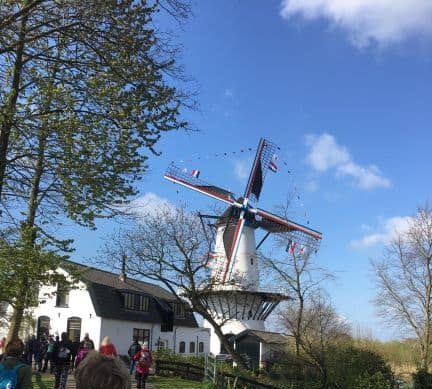
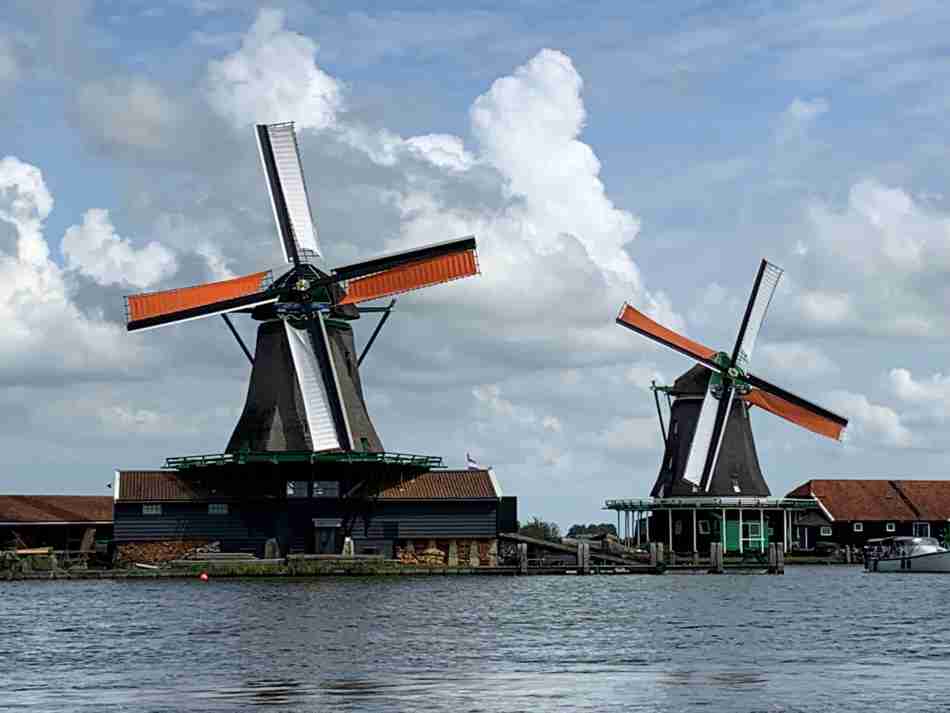
How Many Windmills Are In The Netherlands?
At its peak, more than 10,000 windmills were operational in The Netherlands. Large-scale industrial processes already occurred in the 17th century in Zaanse Schans, one of the earliest industrial areas of the world.
Currently, there are still 1050 out of the original 10,000 traditional Dutch windmills in The Netherlands functioning.
These 1050Dutch windmills are no longer used for industrial purposes but are maintained and operated by volunteers to keep these iconic symbols of our Dutch national heritage in good shape.
In addition, there were more than 2600 modern wind turbines in the Netherlands in 2021, actively generating sustainable electricity. Around 60% of these modern wind turbines are located on land, and 40% are North Sea-based. The number of wind turbines in The Netherlands grows by 10-15% annually.
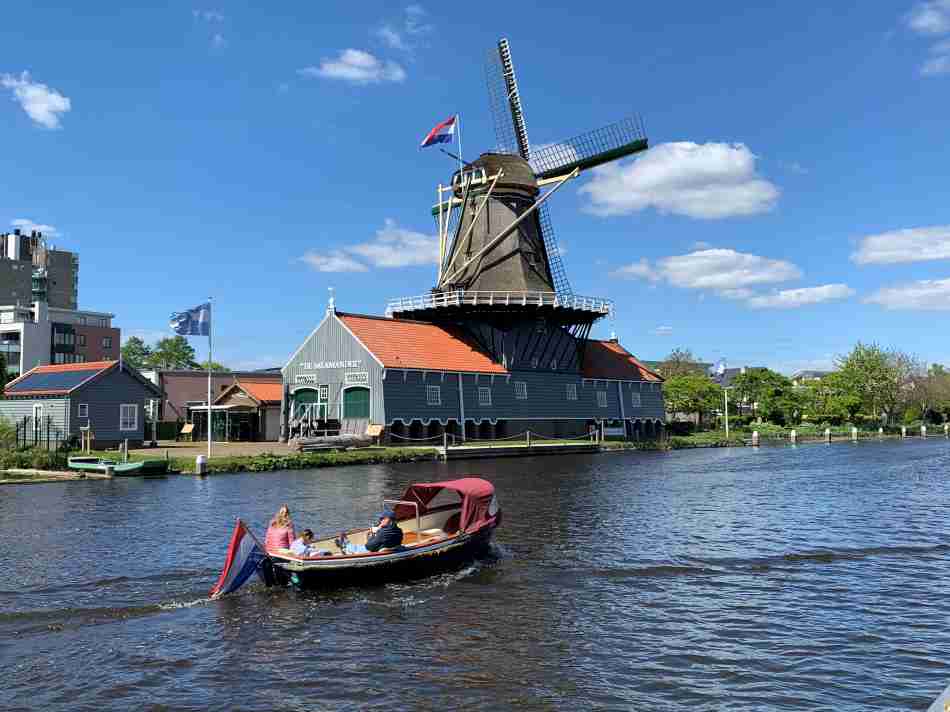
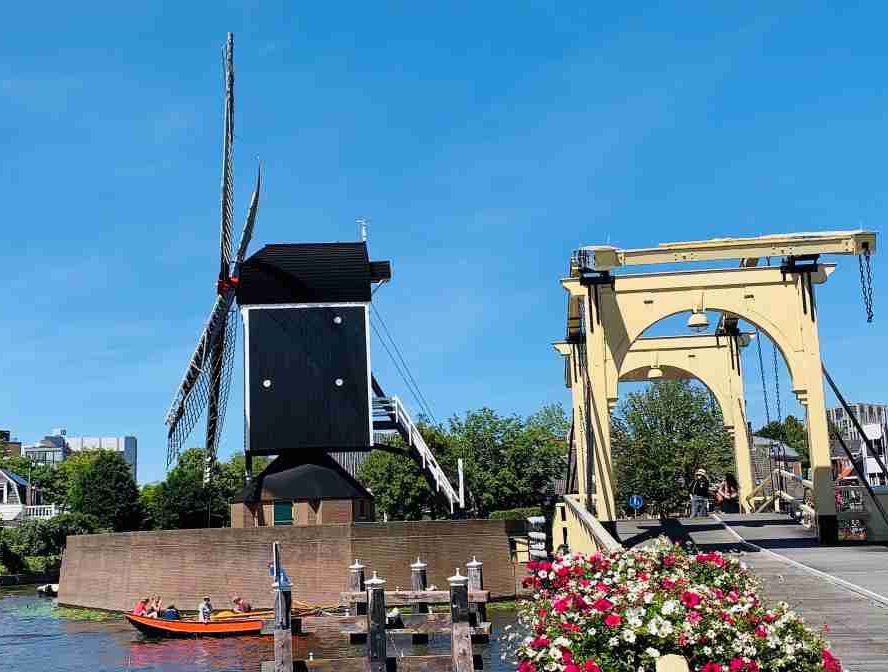
When Did The Dutch Start Using Windmills?
Given that there are so many windmills and their critical importance for The Netherlands to drain their low-lying land, it may seem that the Dutch used windmills forever, but that is not the case.
The use of windmills in The Netherlands started in the 12th century. Initially, windmills were used for grinding grains. Later, windmills were also used to reclaim land from lakes and marshes when the need for agricultural land increased with increasing populations and wealth.
The phenomenal increase in wealth in The Netherlands in the 17th century provided the capital to drive the large-scale agricultural land reclamation by drainage of the large lakes north of Amsterdam. Hence, the number of windmills increased significantly to drain these lakes.
The Beemster Lake’s drainage by 42 windmills in 1612 was the first example of the large-scale reclamation of land to turn it into fertile soil for agricultural purposes. The Beemster Polder is now a UNESCO World Heritage site.
Windmills also drained other lakes north of Amsterdam, like the Wijde Wormer (1620), the Purmer (1622), the Schermer (1635), and the Heerhugowaard (1630). Much of the land north of Amsterdam was reclaimed in this period and has stayed dry ever since.
However, the lakes drained in the 17th century by windmills were relatively small and shallow. Therefore, steam power was required for land reclamation from bigger and deeper lakes, which took place centuries later.
For example, the Haarlemmermeer, where Schiphol Airport is located, was only reclaimed in the middle of the 19th century. Three huge steam-powered mills drained the Haarlemmermeer instead of the 166 windmills that this job would otherwise require.
The use of steam power for this gigantic reclamation project was the breakthrough of steam power in The Netherlands. From that moment, the use of windmills for industrial processes rapidly declined.

Did The Dutch Invent Windmills?
Given the many windmills in the Netherlands, it may look like the Dutch invented them, but that is not the case.
The Dutch did not invent windmills. However, the Dutch recognized the potential of windmills early on and improved windmill technology significantly.
Because windmills were crucial for the Dutch, they put much effort into improving windmill technology. As a result, the Dutch came up with three ingenious improvements to increase the efficacy of windmills.
First, a seemingly simple but significant improvement was that the Dutch divided a windmill into a lower and an upper part. This modification had two advantages.
The upper part of windmills (with the sails) could quickly turn towards the wind’s direction, significantly improving windmills’ efficiency. In addition, the lower part of windmills was now available for storage.
The Dutch did not invent windmills but improved them significantly
Second, the Dutch also significantly improved the mechanism that allowed industrial processes independent of the wind’s direction. It would be best to visit a windmill once to admire the ingenious cogwheel system to appreciate these inventions developed in those years.
Third, by applying a crankshaft in a windmill, the rotating movement converted into a “back and forth” action needed to saw wood. Crankshafts allowed sawmill development, and the Dutchman Cornelis Corneliszoon developed the first sawmill in The Netherlands in 1594.
The shipbuilding industry used wind-driven sawmills extensively because ships were made of wood. The introduction of sawmills was pivotal for the economic revival of The Netherlands in the 16th and 17th centuries. Sawmills allowed the Dutch to build ships on an industrial scale and become a great maritime nation.
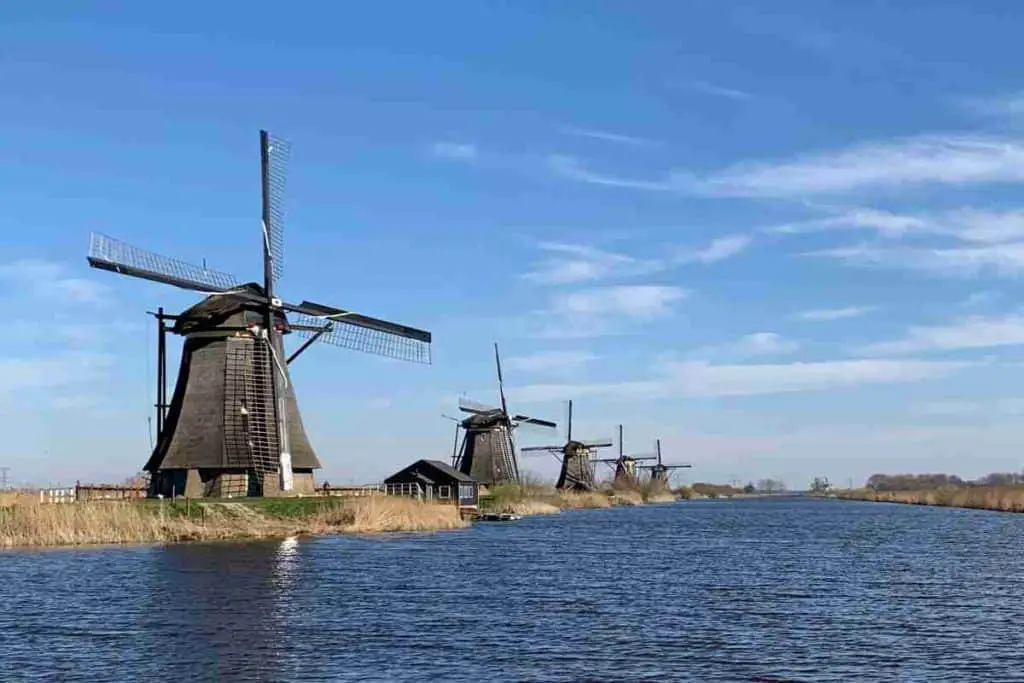
What Are Windmills Used For?
At its peak, there were approximately 9,000 windmills used for various industrial purposes in the Netherlands.
Windmills in The Netherlands were used for 3 purposes
- Windmills were used to reclaim land and ongoing water drainage to keep the water out of land below sea level.
- Wind-driven sawmills allowed the Dutch to build wooden ships on an industrial scale to become a great maritime nation.
- Windmills were also used for industrial processes like crushing grain or spices and producing paint, oil, mustard, and paper.
How Do Dutch Windmills Work?
The pumping of water by Dutch windmills was critical for the Netherlands to survive on low-lying land below sea level.
A Dutch windmill pumps water by converting wind energy into the rotation of an Archimedean screw. A rotating Archimedean screw pumps water 2-5 meters higher and drains water from low-lying land into rivers to let the water flow back to the sea.
The internal windmill mechanism to drive the rotation of an Archimedean screw through interconnected rotating cogwheels is rather ingenious. The Youtube video below provides excellent insight into how the windmill cogwheels drive an Archimedean screw.
You will understand how a Dutch windmill pumps water with an Archimedean screw if you spend 58 seconds watching this YouTube video.
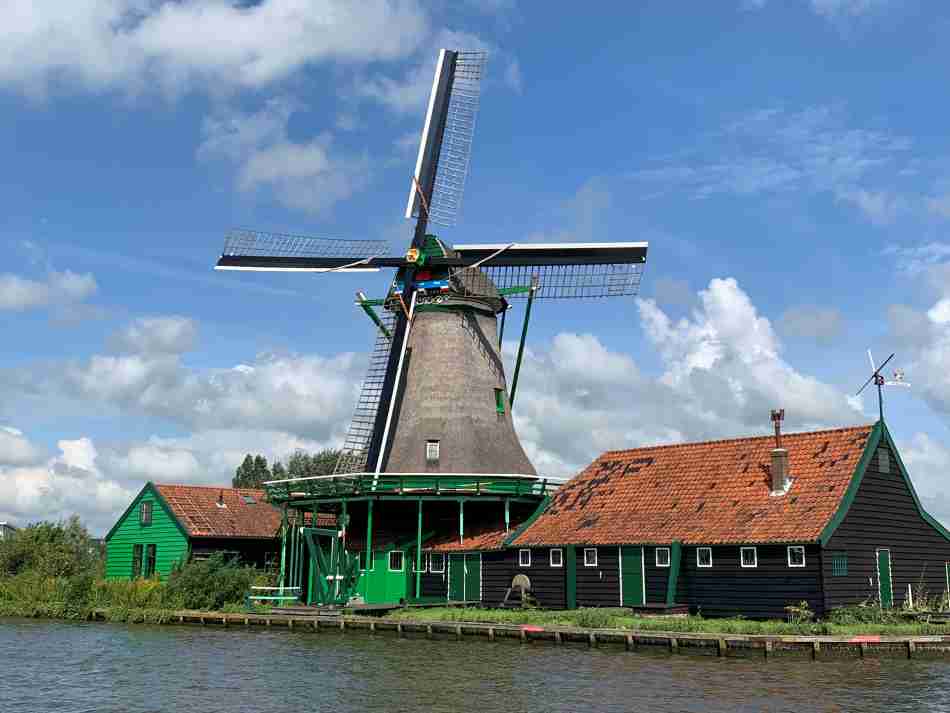
Can You Visit A Windmill In The Netherlands?
You can visit a windmill in The Netherlands because many windmills are open to the public throughout the year. In addition, many Dutch mills are still operating, and guided tours are often possible. A visit to a Dutch windmill is often free of charge.
Some windmills even have a restaurant where you can eat and drink something. There are also mills with a museum or a shop to buy traditional mill products. Please check out this link for more information and the opening hours of all mills in The Netherlands.
Every second Saturday (and Sunday) in May is National Mill and Milling Day. The National Mill and Milling Day in 2022 will occur on the 14th and 15th of May. National Mill and Milling Day is an annual event with more than 600 wind and water mills open.
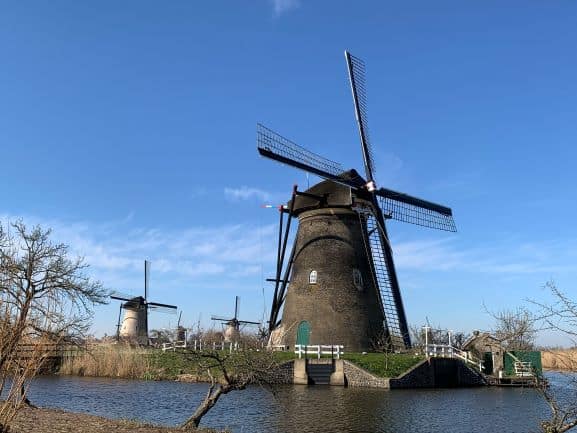

The 7 Best Windmill Locations In The Netherlands
The seven most beautiful windmills (windmill locations) in The Netherlands are:
- The windmills in Kinderdijk
- If you want to understand how the Dutch created their land out of the water, I recommend visiting the windmills of Kinderdijk (1). The windmills and water management system of Kinderdijk are impressive and educational. The water management system in Kinderdijk is so unique that UNESCO selected it as a World Heritage site. The windmills of the Kinderdijk is the largest windmill complex in The Netherlands.
- The windmills in Zaanse Schans
- If you are looking for windmills in Amsterdam’s neighborhood, I recommend going to Zaanse Schans (2) or Schermerhorn (3). In an earlier post, I suggested visiting Zaanse Schans as the starting point of Amsterdam’s single-best day trip. If possible, try to go to Zaanse Schans early in the morning because it can get rather crowded later.
- The windmills in Schermerhorn
- Schermerhorn is Zaanse Schans light. Beautiful but more of the same. Zaanse Schans is closer to Amsterdam, and there is much more to see in Zaanse Schans.
- The city windmills in Schiedam.
- The windmills of Schiedam and Leiden are beautiful examples of windmills in cities. The windmills in Schiedam are the tallest in the world. Visiting these windmills is an excellent idea.
- The city mill “De Valk” in Leiden
- The windmill in Zevenaar
- The windmill in Zeddam
Tip: read 30 Things To Do In The Netherlands (Suggested By Locals) for more inspiration on activities during your visit to The Netherlands.
Are The Windmills of Kinderdijk Worth Visiting?
The windmill complex at Kinderdijk, with its 19 windmills, is a pivotal part of an extensive hydraulic and water management network to keep the polders of the Alblasserwaard dry.
The Kinderdijk windmills are worth visiting because this windmill complex is a prototype of how water management has been set up in The Netherlands. The Kinderdijk windmill complex is such an innovative water management project that UNESCO has recognized it as one of the World Heritage Sites in The Netherlands.
A windmill can transport water 2-5 meters upwards, depending on the type of technology. Kinderdijk uses a two-step water transportation process to bring the water to the river’s level to flow back to the sea.
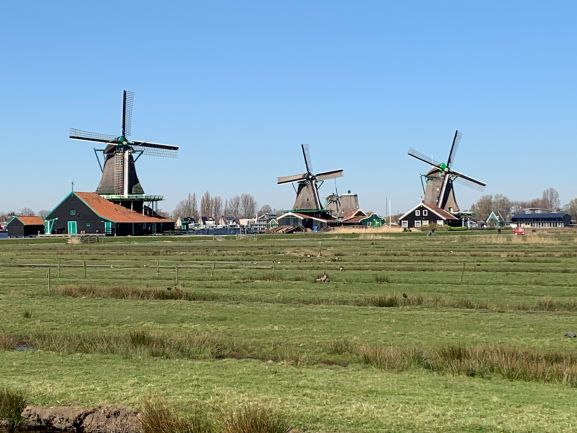
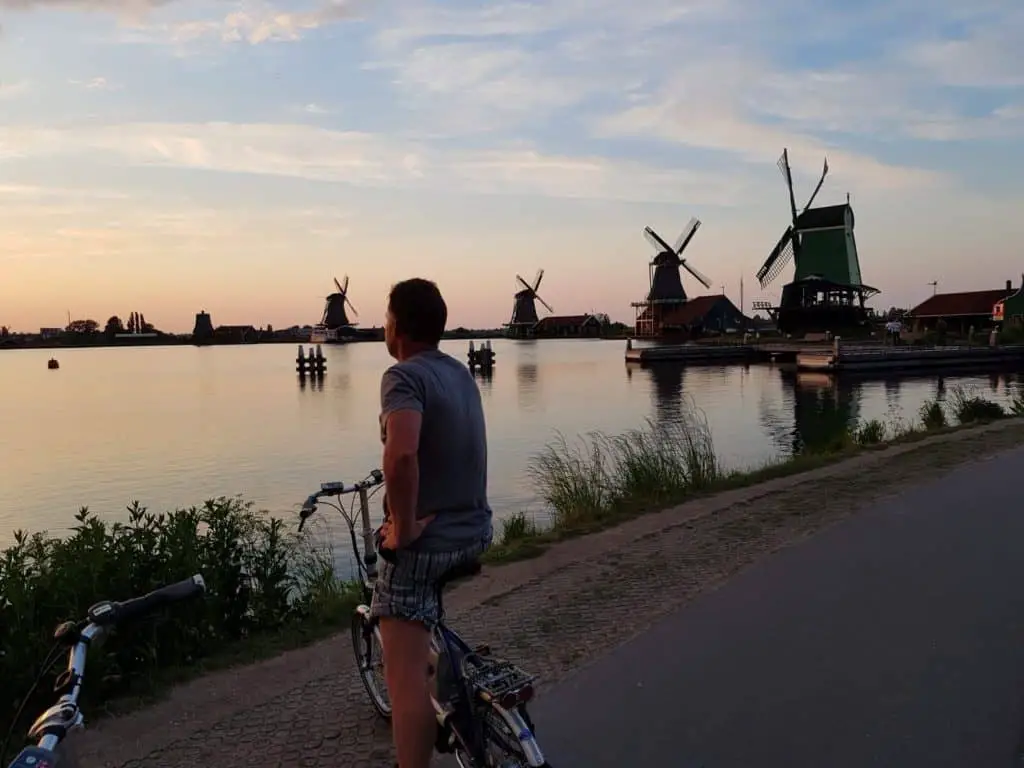
Where Are Windmills Near Amsterdam?
If you are visiting Amsterdam and looking for an opportunity to see Dutch windmills near Amsterdam, look no further than Zaanse Schans, just north of Amsterdam. Zaanse Schans can be reached from Amsterdam by train and bus in less than 30 minutes.
The best place to visit traditional Dutch windmills near Amsterdam is Zaanse Schans, ± 8 miles north of Amsterdam. In the 17th century, the Zaanse Schans was one of the earliest industrial areas in the world, where more than 900 windmills powered various industrial processes.
The windmills in Zaanse Schans were used to grind spices and produce paint, mustard, cacao, flour, paper, oil, and saw wood. The Russian tsar Peter The Great visited Zaanse Schans at the end of the 17th century to learn more about the innovative shipbuilding industry in the Netherlands. A windmill in the Zaanstreek produced the paper on which the American Declaration of Independence was written.
The area around the windmills in Zaanse Schans, a residential area of the 19th and 18th centuries, has been recreated with wooden houses, barns, and workshops. You can see how clogs are produced, visit a cheese factory, and eat pancakes with the children. Zaanse Schans is an excellent opportunity to learn more about our traditional Dutch culture.
Visiting the windmills of Zaanse Schans en Kinderdijk is among the best possible day trips you can make from Amsterdam. Zaanse Schans is much closer to Amsterdam than Kinderdijk.

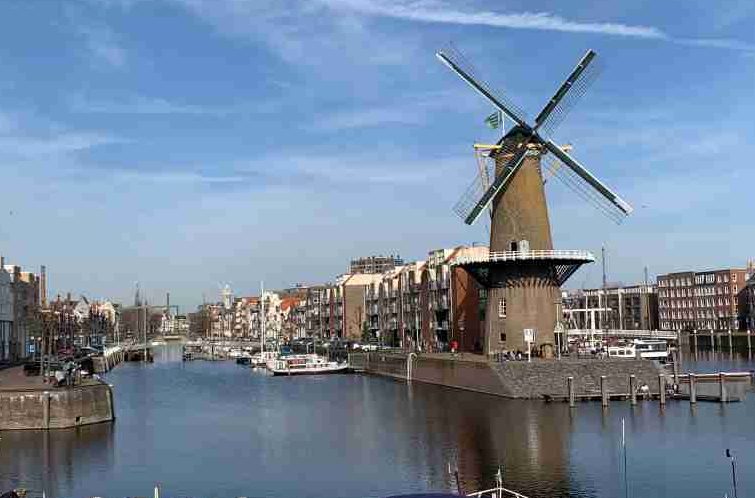
Where Are The Highest Windmills In The Netherlands?
The highest windmills in The Netherlands are in Schiedam. These windmills were built so high to catch enough wind in the city surrounded by houses and other buildings.
The gigantic windmills in Schiedam measure ± 43 meters (± 47 yards) and are the highest in The Netherlands and the world. Windmill de Valk in the center of Leiden is also one of the tallest Dutch windmills, with 29 meters (31,7 yards).
Schiedam is a city near Rotterdam with an impressive industrial history. For example, there used to be more than 30 very high windmills in Schiedam to crush grains used in the industrial production of genever.
Fortunately, five of these giant windmills in Schiedam are beautifully restored.
Another advantage of building higher windmills was that the lower part of the windmill was larger and used for storage and production purposes.
